

Last updated on

Google I/O 2024 centered on a singular focus: the introduction of AI Overviews, or AIOs for short. Previously known as AI Snapshots in Google’s beta Search Generative Experience powered by Gemini, these features have now arrived, marking a pivotal moment for Search.
Despite Google’s impressive first-quarter performance and the waning buzz surrounding ChatGPT, I initially doubted the necessity of AIOs. However, I stand corrected.
What prompted the launch of AIOs? Several potential factors include:
Do AIOs mark the end of Google Search as we know it? Yes. Is this a positive development? Absolutely. While every technological advancement brings risks, it also presents opportunities.
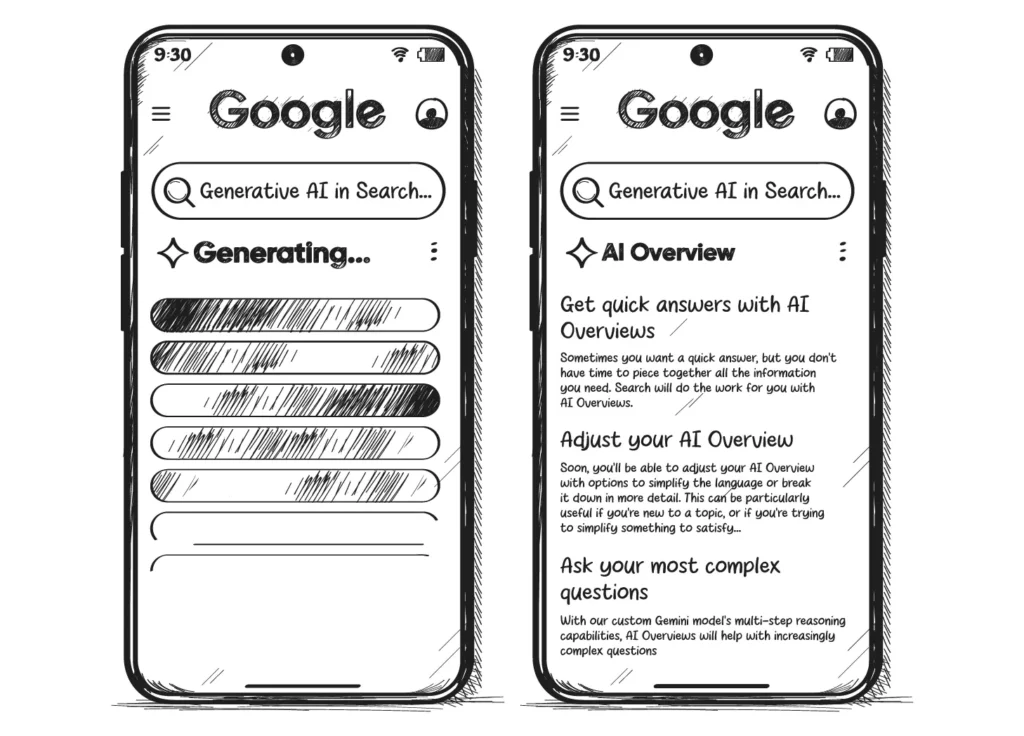
We’re witnessing the dawn of a new era in Search, propelled by the emergence of AIOs—a realm governed by fresh principles. While they may resemble beefed-up 18-year-old Featured Snippets, they defy conventional ranking norms.
Google is effectively blurring the boundaries between searching and taking action.
Liz Reid, Google’s Search lead, describes AIOs as “agentive,” highlighting their capacity to act as assistants capable of performing tasks on your behalf. Providing answers to queries is just one facet of their multifaceted functionality.
In their complete form, these agentive AIOs evolve into what Google terms “AI-organized search results.” Instead of traditional blue links, Gemini curates a tailored stream comprising local findings, concise videos, and community discussions tailored to your query.
Google leverages its competitive edge stemming from its ownership of Maps, Gmail, YouTube, Chrome, and Android. While AI-organized Search Engine Results Pages (SERPs) are initially rolling out for inspirational inquiries, there’s no apparent reason why they wouldn’t extend to commercial queries too.
Rather than merely providing answers, AIOs serve as the conduit to AI integration within Google Search, facilitating actions on behalf of users. The future trajectory of Search pivots away from keywords toward prompts.
AIOs surface for intricate queries wherein Google undertakes “… algorithmic value judgments behind the scenes to determine whether to present AI-generated responses or traditional blue links to click.” This notion of “complex queries” closely resembles the realm of long-tail queries, historically underserved by Google’s search experience despite the integration of AI over the years.
It’s worth noting that AIOs and conventional search results operate on distinct systems. This is evident in the fact that websites penalized by Google can still feature in AIOs, showcasing content and sources.
AIOs employ multi-step reasoning, deconstructing searches (or prompts) into components, addressing each one individually, and then reconstructing the answer. This methodology bears a striking resemblance to chain-of-thought prompting, where a large language model (LLM) elucidates each step while delivering a response.
Within Search, users may potentially provide feedback on individual parts of an answer, refining Gemini’s comprehension of user intent and personalization capabilities.
As with any new technology, there are both advantages and drawbacks. I concede that AIOs demonstrated significant improvements in the Search Generative Experience (SGE) just prior to their launch. Additionally, I believe AIOs represent a superior user experience and a much-needed modernization of Google’s operational framework. It falls upon us to unravel their mechanisms and ascertain how to enhance visibility.
Here’s a breakdown of the positive, negative, and challenging aspects of AIOs.
1. Early data shows that AIOs appear for only 0.48% of desktop and 0.57% of mobile search results.
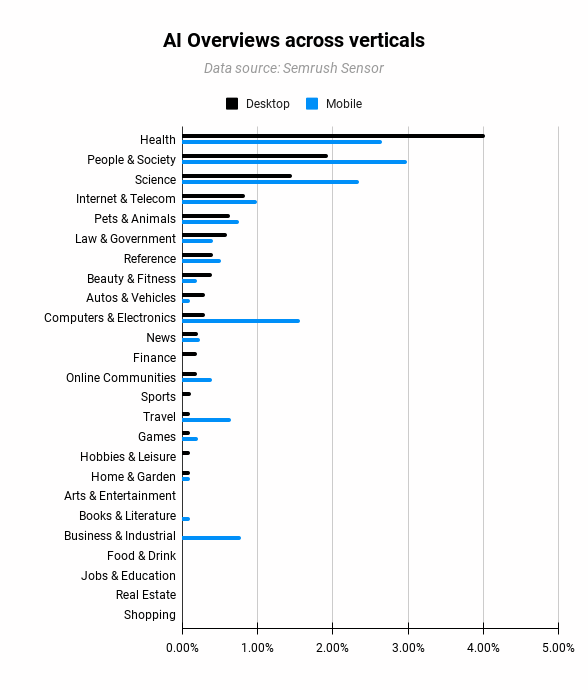
Rank tracking tools gauge SERP features according to the logged-out perspective, which may vary from personalized user outcomes.
Currently, it appears more probable to face an IRS audit than to encounter an All-in-One (AIO) solution.
Initial findings indicate Google’s willingness to provide AI-generated responses in delicate domains such as health, science, pets, and law. The appropriateness of this approach remains uncertain.
Sectors like individuals, beauty, and sports tend to be more lenient towards errors.
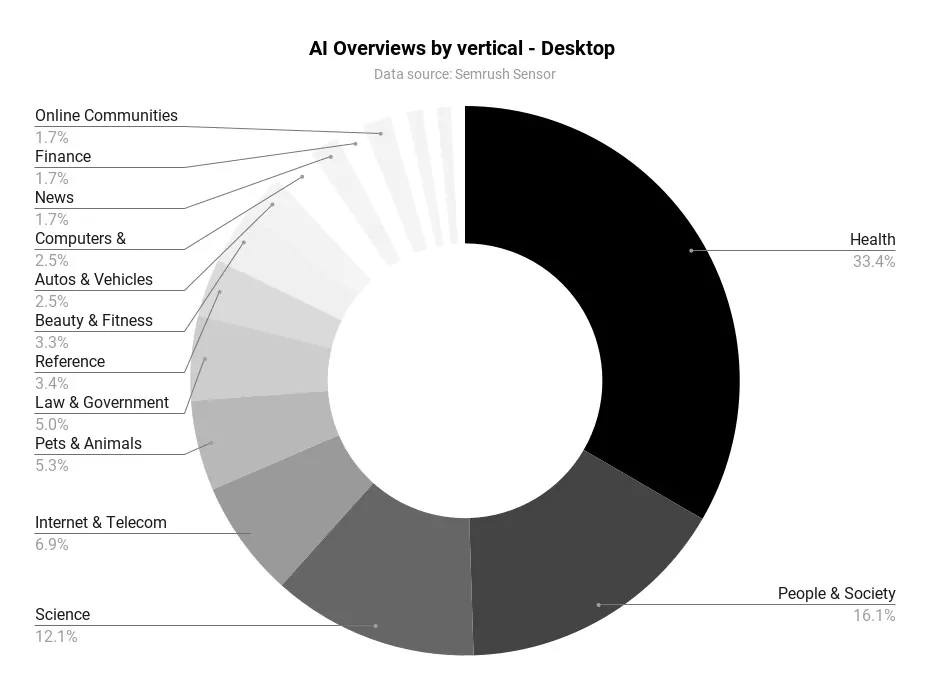
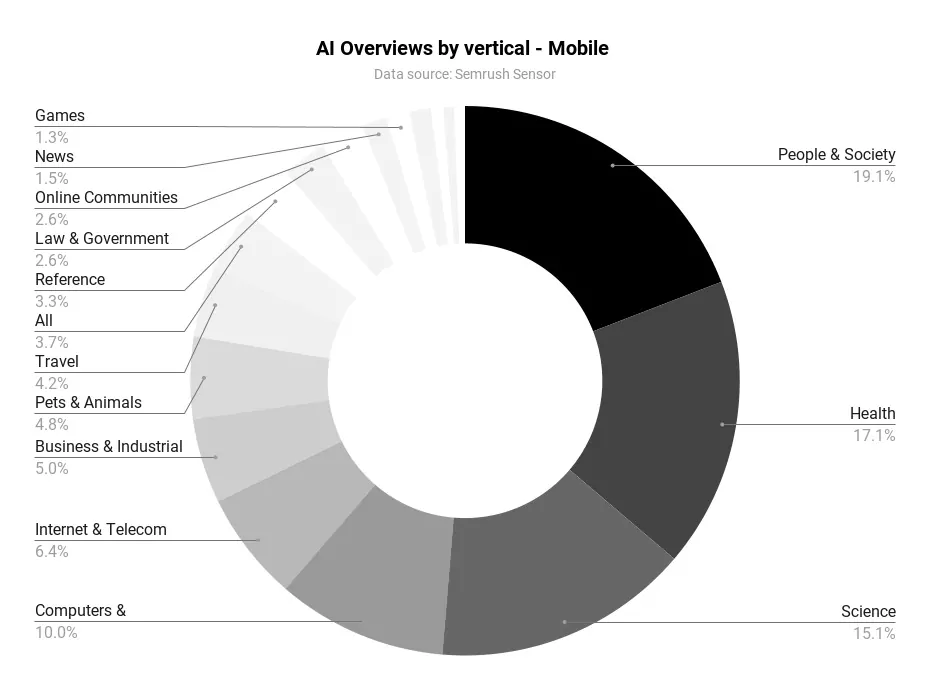
2. What I’m most excited about: AIOs could be a massive opportunity to match searchers with the right site – better and faster.
As per Sundar Pichai, SG&E has led to longer queries. If engagement with AIOs follows this trend, longer queries unveil more about users’ true intentions, akin to how social networks gauge behavior.
Consequently, AIOs are likely to reduce organic traffic but drive more organic conversions – offering more substance with less effort.
3. Lower cost-per-click (CPC).
Cost-per-click (CPC) rates are soaring and becoming increasingly costly. However, if AIOs and AI-structured SERPs efficiently match users with the most suitable companies, CPCs could decrease as fewer advertisers vie for the same searcher’s attention.
This approach could substantially expand Google’s monetizable queries, particularly in long-tail searches, leading to a mutually beneficial outcome.
1. Misinformation.
Instances of AIOs tainted with misinformation or providing dubious answers are readily available. It’s apparent that Google tolerates a certain level of misinformation or subpar results.
Certainly, Google must swiftly address misinformation, particularly in critical areas like health or law. However, AIOs also highlight an uncomfortable truth: the internet has long been rife with misinformation.
Achieving consensus is simpler in some subjects than others. I remain optimistic that AI, in general, facilitates the identification of misinformation.
Moreover, we confront a denominator trap in the discourse surrounding the acceptability of misinformation: we lack data on how many AIOs furnish correct versus factually inaccurate results. While it might constitute only a small fraction, misinformation stands out conspicuously.
Similarly, the ratio of positive to negative experiences with AIOs is uncertain. There’s a possibility that the vast majority of experiences are positive.
2. Traffic loss.
The introduction of AIOs, particularly AI-structured SERPs, is poised to inflict substantial harm on travel sites, publishers, and affiliates. This impact will be particularly profound for platforms aiding in creative tasks, information aggregation, and product evaluations.
Conversely, the beneficiaries will be brands, vendors, and creators who derive revenue not from advertising but from direct product sales.
3. AIOs break the old contract between Google, searchers, and content creators.
Previously, individuals and companies generated content for Google to display ads alongside and received traffic in exchange.
However, with the capability for anyone to replicate Wikipedia’s content using simple LLMs, Google could opt to provide the answer directly and redirect traffic only when users seek further exploration.
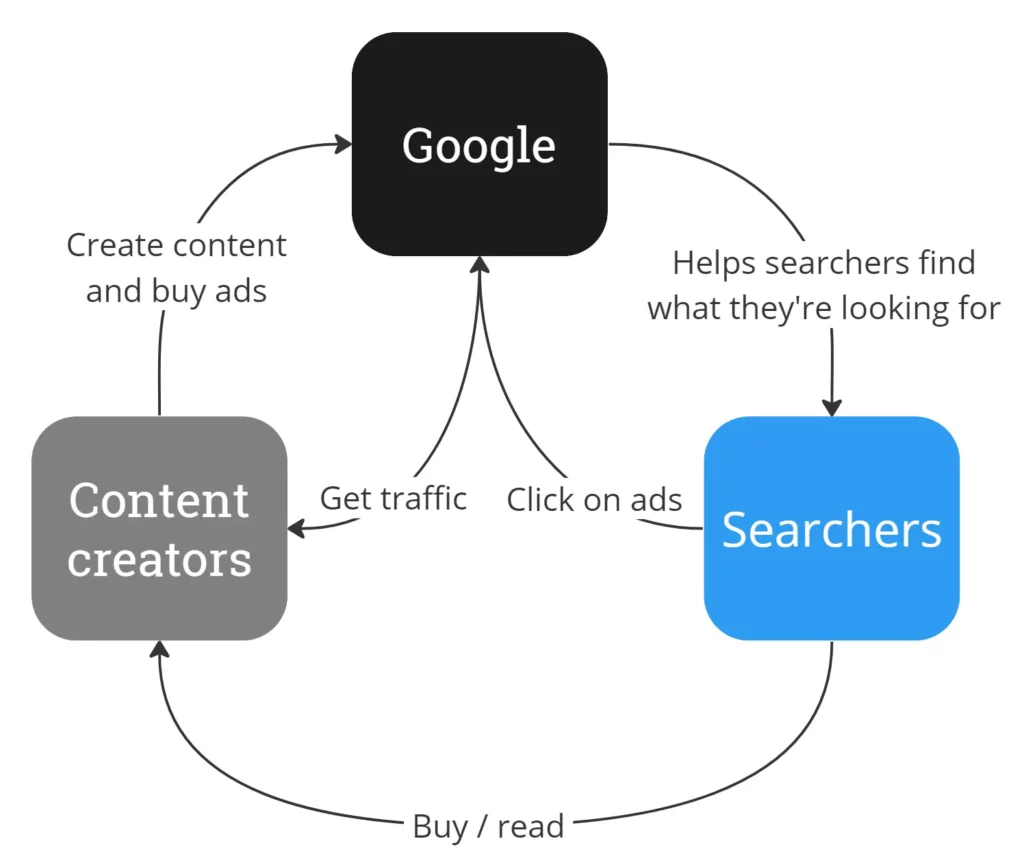
Although AIOs still incorporate links, the extent of traffic they redirect will soon become apparent. Nevertheless, links in AIOs serve another crucial purpose: establishing trust with users by revealing the information’s source.
People have already engaged with AI Overviews billions of times during our experimentation in Search Labs. They appreciate the ability to obtain a concise summary of a topic along with links for deeper exploration. Our findings indicate that with AI Overviews, users are more inclined to utilize Search and express higher satisfaction with their search results.
1. Baseless claims.
Google asserts that AI Overviews contribute to heightened search activity and improved user satisfaction. This might seem paradoxical at first—shouldn’t enhanced satisfaction lead to reduced search queries? Sundar Pichai also touched upon an “increase in engagement,” but what exactly does this entail?
With AI Overviews, users are exploring a broader array of websites to tackle more intricate inquiries. Furthermore, it’s observed that links embedded within AI Overviews garner more clicks compared to those displayed in traditional web listings.
While the announcement may sound like a reinforcement of the notion that top-ranked results attract more traffic, the underlying reality is that AI Overviews feature distinct websites from those commonly seen in conventional web searches. Consequently, these sites, which might not rank prominently in traditional search results, receive increased visibility through AI Overviews, leading to amplified traffic.
2. Data loss.
The challenge with AI Overviews lies in the absence of telemetry from Google to gauge their impact effectively. Metrics like clicks and impressions for AIOs remain entangled with traditional search outcomes. It’s puzzling that Google hasn’t made it simpler for website owners to discern the influence of AIOs by allowing them to track referral traffic.
Google CEO Sundar Pichai has voiced concerns that offering detailed AI preview traffic data might incentivize website owners to manipulate the system. He fears that disclosing such granular metrics could lead publishers to tailor their content specifically to exploit Google’s search engine, potentially resulting in a degraded user experience.
The evolution of organic visibility tracking appears to hinge on amalgamating first-party data (such as Google Search Console) with third-party tools to address existing gaps. While AIOs may present more personalized search outcomes, technological solutions can be deployed to mitigate this issue.
One potential avenue involves training AI bots on human search patterns and instructing them to mimic personas, allowing for the simulation of personalized human search results by scraping Google’s logged-in experience. It’s worth noting that advancements in AI benefit not only Google but also the wider tech ecosystem.
3. No opt-out.
True to Google’s style, opting out of AIOs isn’t straightforward. This presents a challenge, especially considering the prevailing negative perception surrounding AI-driven answers.
While you can employ a nosnippet meta tag as a workaround, it comes with significant drawbacks. Implementing this tag not only removes AIOs but also sacrifices your page’s description and rich snippets, impacting its visibility and attractiveness in search results.
Unfortunately, searchers themselves lack the option to opt out of AIOs directly and may resort to installing Chrome extensions to bypass them, underscoring the limited control users have over their search experience.
Navigating this change is akin to previous shifts like SSL encryption, mobile optimization, SERP features, and the Helpful Content Update (HCU). As always, our approach will involve measuring, testing, learning, and adapting.
In addition to understanding ranking algorithms, we now must also keep a close eye on Google’s AI models, as they shape the landscape for AIOs and AI-driven SERPs.
Take Gemini 1.5 Pro, for instance, which is set to feature a 2 million-token context window by year-end. This equates to a vast amount of data—2 hours of videos, 22 hours of audio, or 1.4 million words—significantly expanding its capabilities.
These capabilities are crucial because they influence user behavior. For instance, AIOs are known to prompt more long-tail queries and voice searches, a fact confirmed by Sundar Pichai.
It’s essential to delve into aspects like training tokens, multi-modal capabilities, zero-shot tasks, and speed, and to engage in discussions about emerging models in the same vein as we do with new ranking algorithms.
Original news from SearchEngineJournal